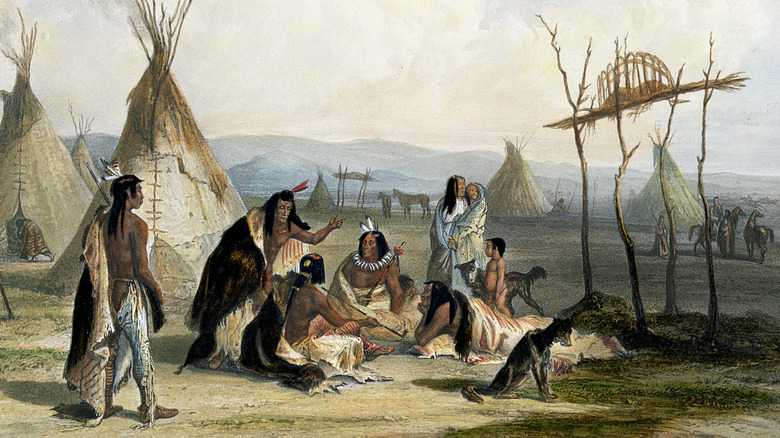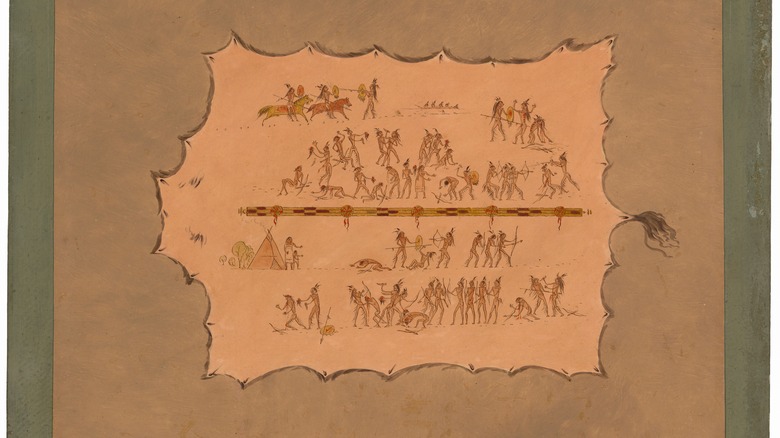What Is A Burial Tree?
Most people today will be buried or cremated after they die, but there's no reason that those should be the only two choices. Many cultures have disposed of their dead in different ways and have unique funeral customs. Some hang their deceased loved ones from cliffsides; others mummify them; a few still eat them. In Tibet, the old Buddhist custom has the dead butchered and left on mountaintops, to be eaten by vultures — a practice known as sky burial (per Anthropological Perspectives on Death).
Similar to sky burial is tree burial, practiced in Bali by the Bali Aga people, in India by the Naga, certain Australian Aboriginal nations, and, formerly, by the peoples of the American Great plains, particularly the Sioux tribes (via Britannica). Like sky burial, tree burial consists of a cadaver left in a tree or on a manmade scaffold (often of birch or cottonwood), resembling a tree. Unlike sky burial, or its somber Zoroastrian equivalent, tree burial is not a way of feeding the dead to wild animals. The body must remain whole, for up to a year; the family of the deceased may bring it food or other gifts.
The body left in full sight
A 1927 monograph by the Smithsonian Institute's Bureau of American Ethnology describes the variations of tree burial practiced on and near the Great Plains. The Cheyenne would sew up the deceased in a buckskin, along with a number of his personal belongings, like his tobacco pipe or his ax. The bundled body would be slung on a high scaffold. The dead man's best horse might be shot directly under the body as well. Curiously, the Cheyenne were wary of ghosts and would avoid the grave.
Another Smithsonian document describes Chippewa tree burial at length. Warriors buried this way would be carefully dressed and coiffed, with a feather tied into their hair for each scalp the dead man had taken in battle. After a two-day vigil, the body would be closed in a chest, and the chest hoisted onto a wooden scaffold, where the bereaved family would visit and bring food for a year. The same source notes that in Michigan, an animal pelt often stood in for the chest.
Tree burial on the Great Plains began dying out in the late 1800s. As the Plains Indians adopted Christianity, they began burying their dead in the Western-style.

